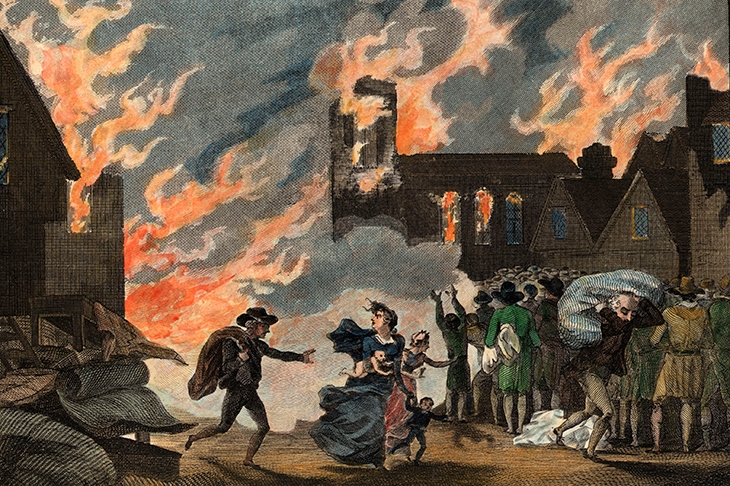Tragically, the current pandemic lends this sparkling study of London in its most decisive century a grim topicality — for the city, during the most explosively expansive phase in its growth, also experienced the arrival of two of the four horsemen of the Apocalypse — war and pestilence — riding in to wreak havoc on an unprecedented scale.
The 17th-century city may have narrowly escaped conquest and famine, but another Apocalyptic outrider — fire — also visited in 1666, leaving medieval London, with its filthy warren of narrow, timbered streets, in ashes. The upside, as Margarette Lincoln demonstrates, was that the cleansing inferno cleared the ground for London to become, as her subtitle claims, ‘the world’s greatest city’.
The story is often told in the words of those who witnessed both the disasters and the beginnings of the city’s subsequent resurrection. Refreshingly, Lincoln’s witnesses include not only the famous diarists Samuel Pepys and John Evelyn, but less celebrated reporters such as the Eastcheap Puritan artisan Nehemiah Wallington.
Writing in 1630 during one of the visitations of the bubonic plague that had frequently returned since its devastating first call as the Black Death in the 1340s, Wallington lamented:
Oh this is terrible and fearefull to those that be living: when we consider how the infection is derived from one to another by waies and meanes neither visible nor sencible that no man knows where he shal be safe.
His fear and puzzlement may well strike a chord as we struggle to understand the causes and consequences of Covid, and his fanatical embrace of wacky religious extremism (he attempted suicide ten times because of his lustful thoughts) surely has parallels with the spread of irrational conspiracy theories in our own time.








Comments
Join the debate for just £1 a month
Be part of the conversation with other Spectator readers by getting your first three months for £3.
UNLOCK ACCESS Just £1 a monthAlready a subscriber? Log in